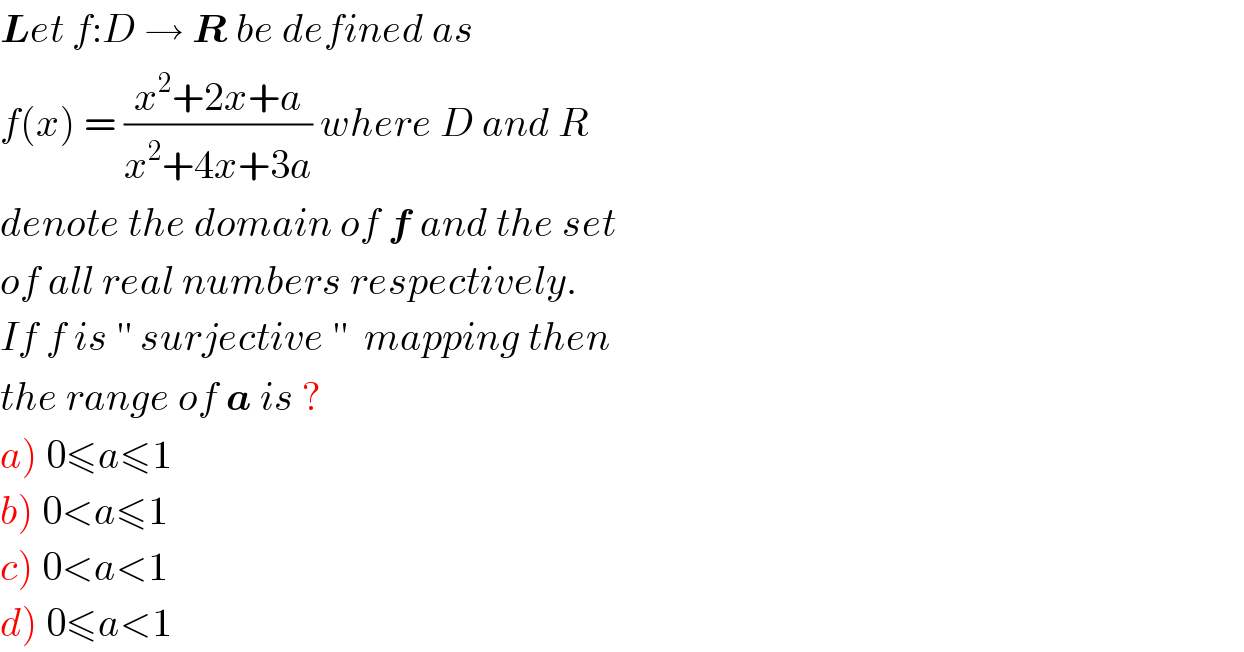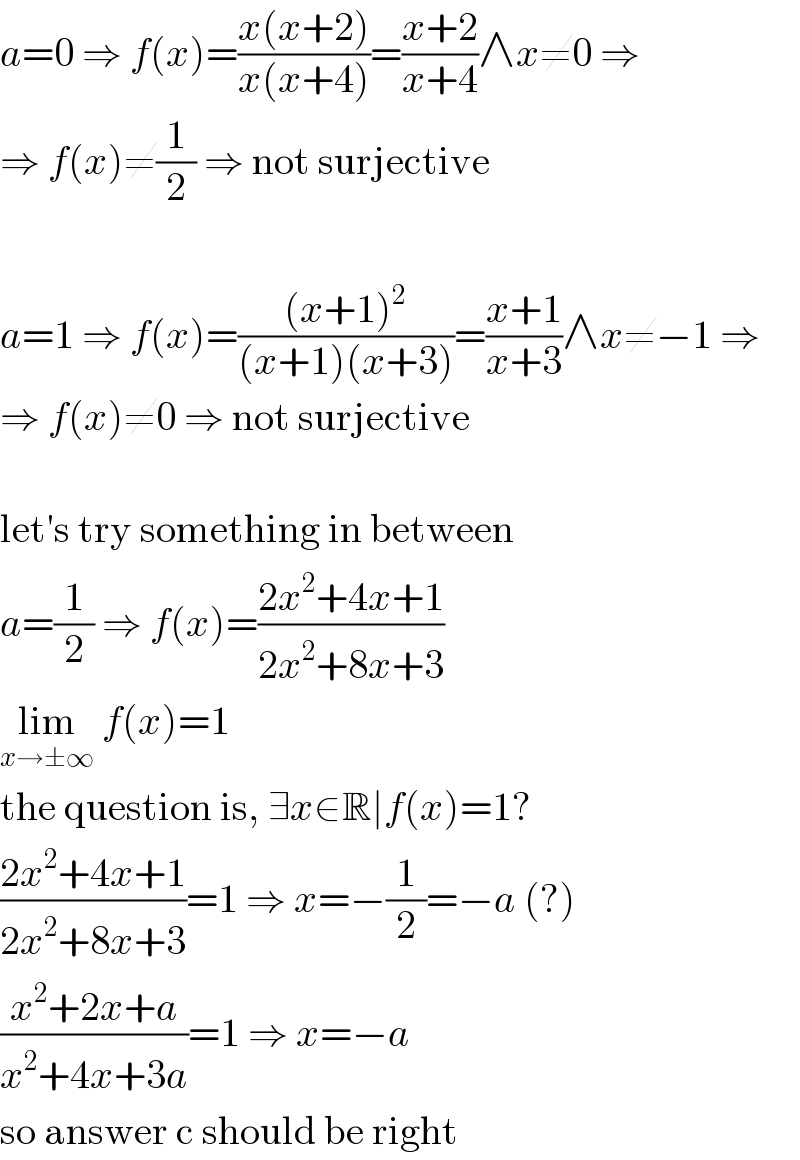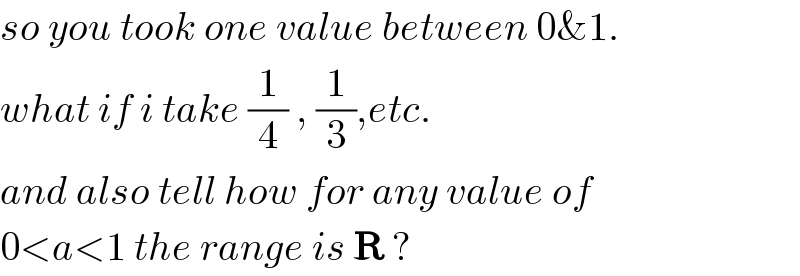
Question and Answers Forum
Previous in Relation and Functions Next in Relation and Functions
Question Number 33815 by rahul 19 last updated on 25/Apr/18

Answered by MJS last updated on 26/Apr/18

Commented by rahul 19 last updated on 28/Apr/18

Commented by MJS last updated on 28/Apr/18
![good point ((x^2 +2x+a)/(x^2 +4x+3a))=(((x+1+(√(1−a)))(x+1−(√(1−a))))/((x+2+(√(4−3a)))(x+2−(√(4−3a))))) the same problem as with a=0 ∨ a=1 would occur only if we can shorten this fraction. in this case: x+1+(√(1−a))=x+2+(√(4−3a)) ∨ x+1+(√(1−a))=x+2−(√(4−3a)) ∨ x+1−(√(1−a))=x+2+(√(4−3a)) ∨ x+1−(√(1−a))=x+2+(√(4−3a)) ⇒ a=0 ∨ a=1 ⇒ ∀a∈]0; 1[: ((x^2 +2x+a)/(x^2 +4x+3a))∈R](Q33963.png)
Commented by rahul 19 last updated on 29/Apr/18

